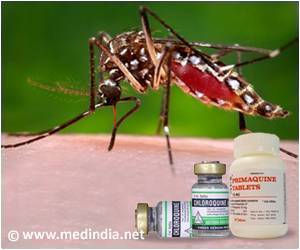
Strategies that prevent this host-targeting process will block disease.
Malaria is a blood disease that kills nearly 1 million people each year. It is caused by a parasite that infects red cells in the blood. Once inside the cell, the parasite exports proteins beyond its own plasma membrane border into the blood cell.
These proteins function as adhesins that help the infected red blood cells stick to the walls of blood vessels in the brain and cause cerebral malaria, a deadly form of the disease that kills over half a million children each year.
In all cells, proteins are made in a specialized cell compartment called the endoplasmic reticulum (ER) from where they are delivered to other parts of the cell.
Haldar and Bhattacharjee and collaborators Robert Stahelin at the Indiana University School of Medicine- South Bend (who also is an adjunct faculty member in Notre Dame's Department of Chemistry and Biochemistry), and David and Kaye Speicher at the University of Pennsylvania's Wistar Institute discovered that for host-targeted malaria proteins the very first step is binding to the lipid phosphatidylinositol 3-phosphate, PI(3)P, in the ER.
Advertisement
However, the team discovered that binding to PI(3)P lipid which occurs first is the gate keeper to control export and that export can occur without Plasmepsin V action.
Advertisement
The research findings appear in the Jan. 20 edition of the journal Cell, the leading journal in the life sciences.
Source-ANI











